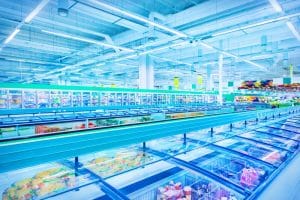The synthetic chemicals flowing unseen through air conditioners and refrigerators could be a major climate change risk, say industry experts.
Australian companies can save billions on energy bills and cut cooling-related emissions by half if they switch away from synthetic hydrofluorocarbon (HFC) refrigerants to natural ones such as carbon dioxide and ammonia, said industry leaders on Tuesday 5th April 2016.
Refrigerants are fluids that absorb and release heat in heating, ventilation, air conditioning and refrigeration (HVACR) systems used in homes, commercial buildings and industrial facilities across the world.
 Speaking at the Australian Refrigeration Association’s (ARA) HVACR Energy Efficiency Seminar at the Australian Technology Park in Sydney, ARA president Tim Edwards told the 40-strong audience that “natural (refrigerants) are better in every way and yet, synthetics continue to dominate the industry”.
Speaking at the Australian Refrigeration Association’s (ARA) HVACR Energy Efficiency Seminar at the Australian Technology Park in Sydney, ARA president Tim Edwards told the 40-strong audience that “natural (refrigerants) are better in every way and yet, synthetics continue to dominate the industry”.
The most recent study on this by the Australian Department of the Environment in 2012 shows that about 43,500 tonnes of synthetic refrigerants such as HFCs or hydroflurochlorocarbons, or HCFCs, are stored in refrigeration and air conditioning equipment in the country. This volume of stored gas is known as a gas bank.
In comparison, the gas bank for natural refrigerants such as carbon dioxide, ammonia, and hydrocarbons was 4,800 tonnes at the end of 2012.
Synthetic refrigerants such as chlorofluorocarbons (CFCs) and HCFCs were developed about 80 years ago as a safer alternative to existing natural solutions, which at the time were highly flammable. However, as scientists realised that these chemicals deplete the ozone layer, the international community agreed to phase out their use.
The Montreal Protocol, an international treaty, was signed by 197 countries in 1987 to achieve this and required the global phase-out of CFC-based refrigerants by 2010. Developing countries have till 2030 to phase out HCFC use. Developed countries have till 2020 to do this.
However, the Protocol does not currently address HFCs, which are synthetic refrigerants developed to replace CFCs and HCFCs.
While HFCs have no effect on the ozone layer, they still have a high global warming potential, also known as ‘GWP’ in the industry, which is a measure of how much heat a greenhouse gas traps in the atmosphere compared to carbon dioxide.
Last November, the 197 countries which signed onto the Montreal Protocol agreed to add an amendment to the document aimed at reducing the production and consumption of HFCs.
But getting the industry to reduce its HFC use may be difficult because, according to an ARA report, companies which make HFCs “have enormous investments in the production of patented synthetic refrigerants and therefore have a great deal to lose” if their products are replaced by more sustainable natural refrigerants.
Therefore, even though the initial concerns surrounding the safety of natural refrigerants have largely been addressed by better technology, synthetic refrigerant makers continue to say these alternatives are risky, saids ARA.
While natural refrigerants are not widely used in HVACR currently, they absorb and release heat more efficiently than synthetics, and can deliver between 10 and 40 per cent more energy efficiency than HFC or HCFC alternatives, said Edwards.
In addition to indirect emissions from energy use, refrigerants also cause pollution when they leak out of HVACR equipment. This is an inevitable eventuality, said Edwards, because HVACR systems are frequently under intense mechanical stress. When leakages happen, synthetic refrigerants cause much more global warming than natural ones, he added.
For example, the government’s 2012 study estimates that the GWP of various HFC refrigerants over a 100 year period ranges from 794 to 3,922.
In contrast, carbon dioxide has a GWP of one, and ammonia causes no global warming at all. Some natural hydrocarbon refrigerants have a maximum GWP of three.

